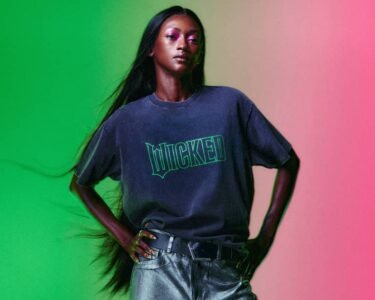dpatop – 23 July 2024, Hamburg: Nele (l) and Marissa from Dortmund, fans of singer Taylor Swift, … [+]
Lately, the beauty industry has seen a major spike in interest, especially among Gen Z. According to Nano, demand for beauty products has shot up by 20% year over year, comparing Q1 2023 to 2022. And Statista reports that, on average, Gen Z is dropping over $2,000 annually on beauty products.
But with all this enthusiasm comes a downside—it’s hitting their wallets hard and even pushing some into debt.
One of the big reasons behind Gen Z’s beauty spending is the huge influence of social media. Platforms like Instagram, TikTok, and YouTube are goldmines for beauty brands and influencers to reach young consumers. A 2023 Statista survey found that 83% of Gen Z women bought beauty products online because content creators recommended them on TikTok. In fact, 53% of Gen Z turns to TikTok for beauty inspiration.
These platforms are packed with tutorials, product reviews, and beauty challenges, all designed to grab Gen Z’s attention, at a very high cost. For example, Kim Kardashian’s skin care line, SKKN, can cost upwards of $673. The constant exposure to perfectly curated images and videos creates an idealized version of beauty, making it seem like you need to splurge on beauty products to reach those standards.
Then there’s the rise of beauty influencers who constantly promote a range of products to their followers. These influencers, who often get paid or receive free products from brands, normalize the idea that you need an extensive collection of beauty products to have flawless skin or the perfect look. This can make Gen Z feel like they need to buy these products to keep up with trends and imitate the influencers they look up to.
Societal pressure also plays a huge role in Gen Z’s beauty spending. This generation is growing up in a world where appearance is closely tied to success and social acceptance. The pressure to look a certain way isn’t new, but it’s intensified with social media. Gen Z is very aware of the importance of looking polished and attractive, both online and offline, which pushes them to invest in a variety of beauty products—from makeup and skincare to haircare and grooming.
While it’s easy to see why Gen Z spends so much on beauty products, there are real concerns about the financial impact. According to LendingTree, 27% of Gen Zers have gone into debt to buy beauty products.
Many in Gen Z are still in school or just starting their careers, so their income is often limited. Overspending on beauty products can strain their budgets and cause financial stress. Plus, the beauty industry is always releasing new products and trends, creating a never-ending cycle of consumption that’s hard to break.
Looking ahead, these spending habits could have long-term consequences. As Gen Z starts to take on more significant financial responsibilities like rent, student loans, and saving for the future, the money spent on beauty products could hold them back from achieving financial stability.
It’s crucial for young consumers to understand the importance of budgeting and prioritizing their financial well-being over the latest beauty trends. A good rule of thumb is to spend no more than 2% of your annual take-home pay on beauty products.
For instance, if you make $50,000 per year, your take-home pay after taxes is about $42,000, which means you should cap your beauty spending at $840 annually.
Spending more than 2% on beauty products isn’t the smartest financial move and can keep you from reaching your financial goals.
Thus, it’s important for this generation to find a balance between self-care and financial responsibility. By doing so, they can enjoy beauty products without sacrificing their long-term financial health




